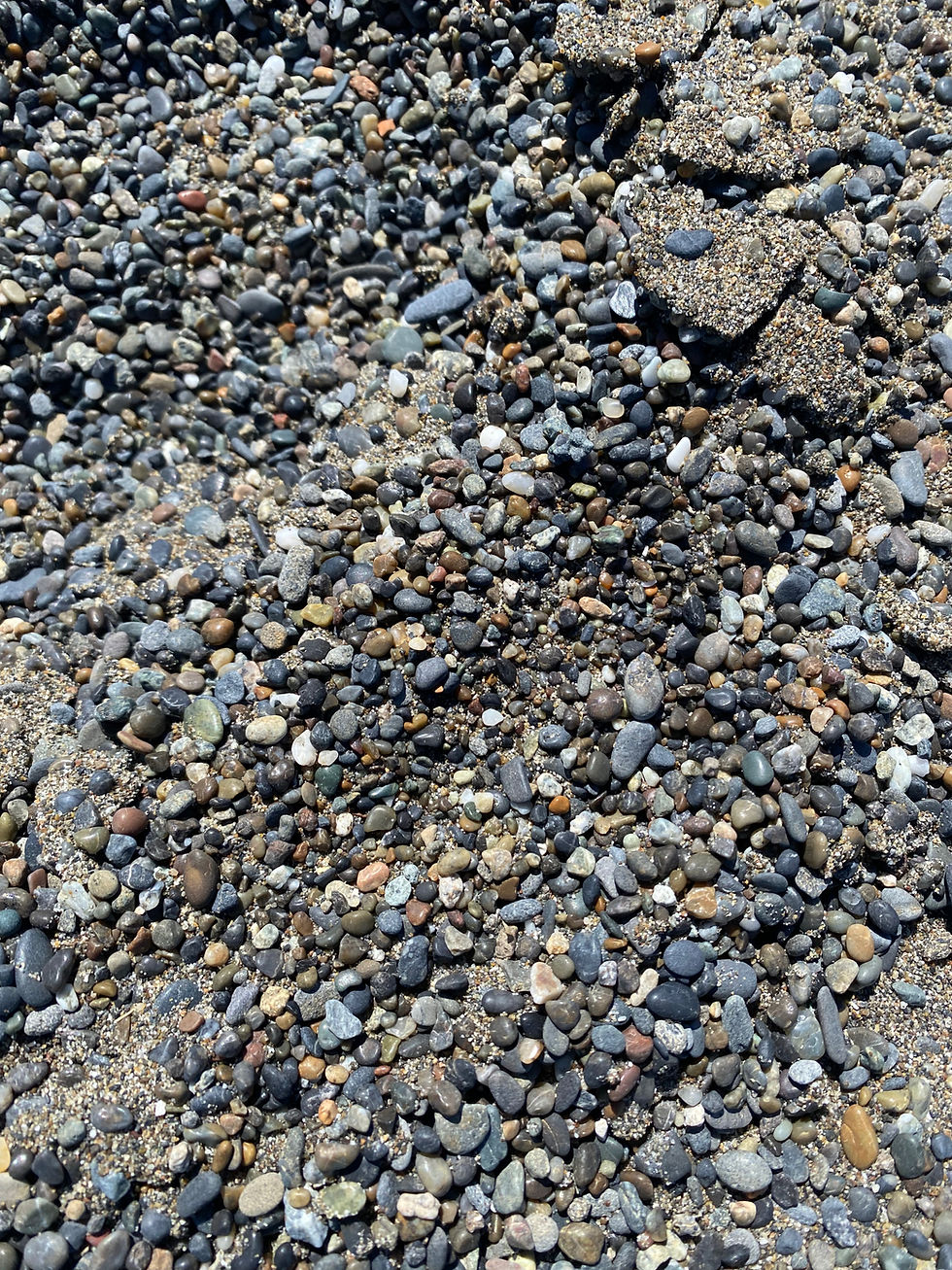Agate Hunting on the Beaches of Oregon
- Stephanie Erickson
- Jul 23, 2025
- 3 min read

Oregon has some of the most scenic coastline I have ever seen in the lower 48. My husband and I spent three days traveling the coast of Oregon on our way to Redwood National Park and we could have spent weeks on the coast. Unlike the east coast where every inch of open oceanfront lands has been built on with private homes, the Oregon coast has over 363 miles of coastline. The majority of which is open land and publicly accessible beaches. Oregon State Parks are phenomenal. Few required a day use parking pass that could be acquired for $10 but most were FREE and had restroom facilities!
Traveling with another geologist, my husband, it wasn't a stretch to convince him we needed to do some rock hounding on the beaches. Oregon beaches have some phenomenal minerals to hunt from jasper, bloodstone, chalcedony and the piece de resistance...agates!
How are agates formed?
Agates are formed when sediment within the cavities of volcanic rock is transformed under intense pressure and extreme heat, forming chalcedony quartz. When this chalcedony features bands or mineral inclusions, it is referred to as agates. Agates come in a wide variety of colors from white to black but the most prized are the translucent. Agates get their color from impurities in the silica rich water.
Iron oxide: This is the most common impurity that causes agate to have color. It can cause agate to be red, brown, or yellow.
Manganese oxide: This impurity can cause agate to be purple or pink.
Chlorite: This impurity can cause agate to be green.
Limonite: This impurity can cause agate to be yellow or brown.
Hematite: This impurity can cause agate to be black.

The Oregon coast also has Jasper, Oregon Jade, Bloodstone, Carnelian, and Petrified Wood which can be confused with agate. I have also uncovered marine fossils in the gravel beds, primarily mollusks in the Newport, OR area.
When looking for agates on the beach, look for patterns and colors in the gravel beds. The primary bedrock is a sandstone or basalt. The basalt is responsible for the black sand. Agates form in the cliffs along the beaches and over time they are eroded through natural processes. The agates are washed down into the gravel beds which act as a rock tumbler in the waves and tides to polish and round the edges. The agates, jasper and other semi-precious gems will stand out from the sandstone and basalt due to their luster. When wet agates will glint in the sun. Agates also tend to be less dense than the basalt and will move more in the wave action. Generally,
How to tell the difference between agate, chalcedony, jasper, jade and bloodstone
All of these stones are microcrystalline forms of quartz, so they all have the same primary composition of silica dioxide (SiO2). There are a few differences, however. There are many ways to classify agates as well. You will need a handy pocketknife to do a scratch test (agate has a hardness of 6.5-7 and cannot be scratched with a knife), and a flashlight for translucency to determine if you have found an agate.
Agate - translucent, waxy luster, and banded
Chalcedony - translucent but no bands
Jasper - opaque, smooth, waxy texture, can be red, yellow, brown or blue, often spotted or striped
Jade (Nephrite) - waxy texture and luster, opaque (but can be translucent), usually green, white, yellowish brown or a gray black, generally has fibrous cracks
Bloodstone (Heliotrope) - generally dark green (chalcedony) with deep red or purple spots (jasper), adamantine (shiny/sparkly) luster,
Carnelian - translucent, dark red, no banding
Check out Agate Ariel's YouTube Channel for some great tips on agate hunting and identification of minerals.






Comments